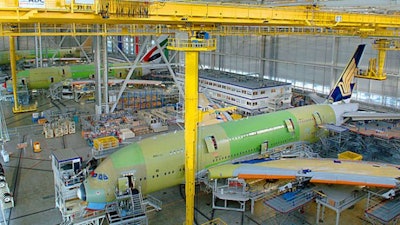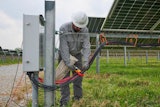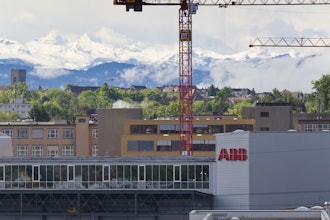
The following article appears courtesy of InternetofBusiness.com and their upcoming event Internet of Manufacturing.
If Airbus was to stop selling new aircraft today, it would still take the company a good 10 years to deliver on its existing order book. This capacity burden means Airbus must maintain its focus on its immediate ‘day job’, but at the same time, come up with news ways to re-engineer the way it manufactures its aircraft.
“If you look at aircraft production plants perhaps fifty years ago, the facilities look remarkably similar. Manual labor dominates the production line and workers need to be highly skilled – but really, things haven’t changed that much,” said Jens Graffs, vice president of assembly & installation at Airbus.
Graffs was effectively lamenting the apparent lack of software-driven automation intelligence that he feels must ultimately be brought to bear inside the intelligent factory of the future.
When we look at how Airbus manufactures its aircraft, consideration of aerodynamic performance comes first. Graffs suggests that this results in a situation where design and industrial aspects come second. The whole operation requires purpose-built ‘jigs’ to hold the fuselage, and the build process is slow.
Automation Frustration
“We have to understand that a fully automated production line is not possible due to current build concepts,” said Graffs.
Let’s also consider cycle times here – an aircraft’s lifecycle, after all, stretches over 30 years. So if Airbus is going to start bringing in new automation intelligence (in the shape of hardware and software), then it needs to be able to use those tools over the complete lifetime of an aircraft.
And over that lifespan, an aircraft will typically notch up around 100,000 hours of flying time. This is not the realm of so-called Fast-Moving Consumer Goods (FMCG) production. For want of a less transport-related analogy, this is a big ship and it’s going to take a while to turn it around.
“Our challenges in the future are that we will need extremely high customization capabilities and the ability to work with a completely global supply chain. We need to start to be able to design for automation and work to implement controls for both cyber and product security,” said Graffs.
Three Domains of Digital
As Airbus looks to implement its strategy for the future of the digital factory, it segments its business into three domains:
Tier 1: Enterprise Resource Planning (ERP)
Tier 2: Manufacturing & engineering resource
Tier 3: Shop floor
Stage one on the road to digitization is a vertical model. Following this, the company anticipates an intermediary stage of development where Tiers 1, 2 and 3 are all aligned horizontally. Bringing the digital factory into existence, it will eventually achieve a more cyclical, ‘full integration’ approach, introducing additional domains including software platforms to provide Product Lifecycle Management (PLM) and a holistic virtual view of the factory.
“The digital factory is a must for us to be able to in increase our production capacity and economic stance as a business developing and building aircraft throughout their complete production-line lifecycles,” said Graffs.
Looking to the future, Graffs said Airbus is looking to marry a physical-virtual design and development process. The company is clearly very realistic about how it brings in new levels of automation and ultimately creates the digital factory of the future. With such an exacting and life-critical product in hand, Airbus cannot afford to put its profit targets ahead of the need to continue manufacturing aircraft that are safe for crews, passengers and cargo.
To see the complete article, click here.























